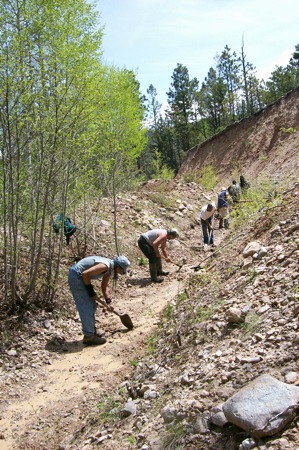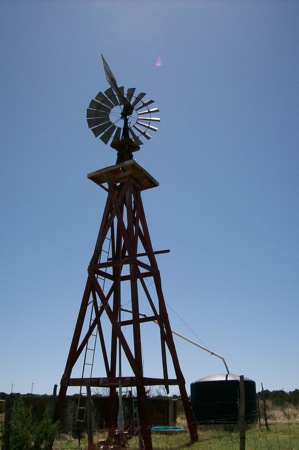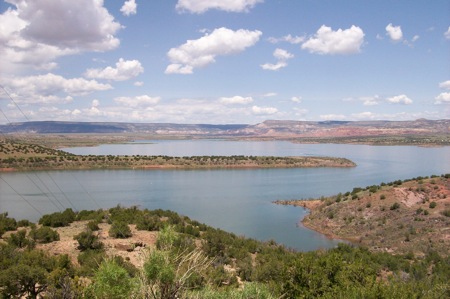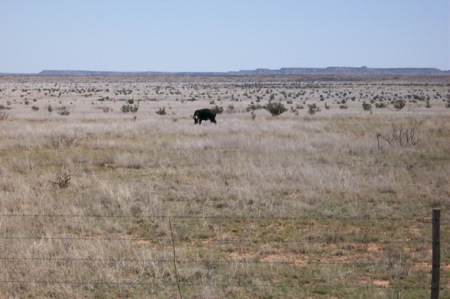
The Shift of Land > Land & Water
Land and Water
The land that we today call NM before had many different names in many different Native languages as Pueblos, the Dine Nation and wandering tribes used and cared for the land before Europeans came. The Pueblos grew corn, squash and beans with different water management and dry land techniques. They gathered, hunted and the Zuni even herded turkey. After centuries of living in such a harsh environment the people had learned to live in balance with the earth. Land and Water were both precious and sacred human right.
When the Mestizo and Spanish settlers came into this territory after the Spanish crown claimed the land for the kingdom across the ocean the 1st order of business was the Acequia—a technique and culture of water management brought to the Spanish by the Moors, consisting of ditches which divert water from streams and rivers to growing lands and democratic rules to provide to all.

Estevan Arellano, Nuevo Mexicano, journalist and traditional farmer in Embudo NM, explained in an interview done for The Shift of Land at his home in the Embudo Valley surrounded by blooming orchards and baaing sheep, that “without the water you couldn’t live,†for that reason the Acequias were the 1st order of business when the pobladores – or settlers – came from Mexico. The water nourished the people, the plants and animals allowing them to thrive and live. Arellano also explained that the land was managed by carefully selecting where the house, the animals and the crops were placed. He told that the worst was used for the house while the best was used to grow and another part was selected for the animals. In this way the people tried to balance themselves with the land.
New Mexico Land and Water
Today the land and water have a different value, as the majority of our foods are shipped in from mega farms in other states and nations. The view that land gives and the amount of houses that you can accommodate with water now determines the value of these precious resources.
New Mexico like the rest of the Nation has experienced a boom in growth. A recent article in the Albuquerque Journal explained that New Mexico is the 13th fastest growing state in the nation, with 27,000 new residents in one year from July1, 2006 to 2007. John D’Antonio New Mexico State Engineer explained that the population is expected to grow by 85% in the next 40 years. The issue is water and land. Where will more water come from and what affect will the countless developments already finished and proposed have on the land and on agriculture?

Development differs around the state. In rural scenic areas such as Taos the threat to agricultural lands are the second homes, which are being built driving the cost of land steadily upward making it almost impossible for local people to buy or even keep the family lands. Many times the lands that the wealthy seem to appreciate and pay top dollar for are the most valuable and richest farmlands. This creates another problem for local food production. Urban areas, such as Albuquerque, continue to expand with subdivisions on top of subdivisions also using land that once supplied a local market economy. Water makes the breaking point.
The state is in the middle of the water adjudication process. The adjudication determines who owns what water right. The most senior water rights go to the Native Nations as they were undisputedly using it before any European came. Due to previous State Engineer’s water deals it’s estimated that people own four times the amount of water as exists in the state. This makes the process difficult to determine who really owns what right. Development around the state has needed water to flush the new toilets water new green lawns and run through the taps in new subdivisions. Much of this water has been transferred from agriculture.
Trends… This is a trend in all of the US. Peter Vigil from the Taos Soil and Water Conservancy district explained that within planning circles they’re all trying to figure out how to keep up with the amount of development, which is taking place all over the country. Different states are adopting different techniques to protect the land and insure that the market, which values development more than agriculture, doesn’t consume all undeveloped lands.
Transfers of water also threaten agriculture. Land and water are connected, Los Lunas Dairy Farmer and water activist Janet Jerrit explained in an interview that there are 2 types of land: land which has had water transferred off of it and can no longer be farmed, and land which has been transferred to development. D’Antonio explained that to meet the growing population and consequent development water has to be transferred from agriculture. He explained that 75% of the states water is used for agriculture. Jerrit countered his statement in a later interview showing that the majority of the agriculture is in the southeastern part of the state where irrigation normally comes from wells. The majority of the growth is taking place in the middle Rio Grande, where Acequias are used. These are the waters that are most rapidly being transferred. Jerrit sighted studies, which showed that irrigation with surface waters replenished underground aquifers and added to the overall health of the environment.
Nationally and Globally
These trends are not limited to New Mexico. Water and land are being speculated on and transferred all over the world. In the US we see that the market places a higher value on water for development rather than on food production. Noel R. Gollehon a water use management program Leader at the Resource Economic Division of the USDA, in an article “Water Markets Implications for Rural Areas of the West,

Noel R. Gollehon a water use management program Leader at the Resource Economic Division of the USDA, in an article “Water Markets Implications for Rural Areas of the West,†explained that a 20% decline in economic activity is seen when water is transferred from rural areas to developments. The 20% followed the water. This would mean that an area that transferred water rights wouldn’t irrigate anymore wouldn’t need gas for their tractors, for hay bailers, wouldn’t have jobs for people planting and harvesting they wouldn’t use the mill or any processing facilities anymore. There was also a higher rate of out migration. So, people left when they could no longer make a living. This is an example of how land and water use might change a community and in effect change the culture of a community.
Privatization of water for ever expanding urban areas and for the use of large international corporations, and the use of lands for mega farms has become an unfortunate trend around the world. Communities in developing countries have had their waters privatized through World Bank and World Trade Organization Programs. Water is seen as a human need rather than a human right that means that a need can be met through the market with money. A right is something that we all must have regardless.
At a First People’s Workshop in Defense of Water in Mexico City in 2005 six forms of water privatization were laid out for the participants. They are as follow, the privatization of water in urban zones by private purifying contractors; whole territories and bioregions become privatized by companies for monopoly practices through the help of the governments; industrial and agribusiness users are given large dams and new water irrigation technologies which bypass traditional water users like small farmers and indigenous peoples; the contamination of water by corporate mining, oil drilling, paper pulp electrical generation, and toxic agro-chemical intensive industrial monocultures; privatization by bottling companies such as Coca-Cola, PepsiCo, Nestle and Danone who buy the water at an extremely low cost and sell it at over a thousand times what it cost them, and finally by monopolizing the technologies used for its extraction and purification. The 3 justifications that they use are population growth, the need to assign economic value to water and the failure of the state.
Impacts on land and culture
Our cultures are tied to the land and to what the land gives us. When we allow the market to determine the values that we put on the land and water we loose part of this connection. The land has defined us and dictated what our cultures needed to survive, in this way we lived in balance with the land. Cultures are changed in New Mexico in the US, and in the world as our land and water becomes less important for living as it becomes for buying and selling.
